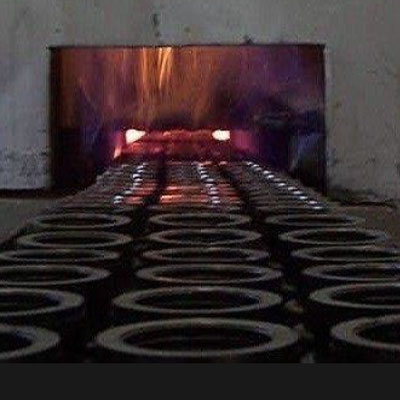Shim Surface Finish: A Closer Look at Precision Shims
The world of manufacturing is a complex network of intricate details and precise operations. One such critical component in the realm of precision machinery is the “precision shim.” These thin pieces of material, often made from metals like steel or aluminum, are used to align parts or make fine adjustments to machinery. They are an indispensable part of various industries, including automotive, aerospace, electronics, and more.
Precision shims are used to fill small gaps or spaces between objects, ensuring accurate alignment and spacing. This adjustment can be critical in maintaining the performance and lifespan of machinery, as it reduces unnecessary wear and tear. Given their essential role, the production of these shims necessitates a high level of precision and quality, which is where the significance of surface finish comes into play.
Surface finish, in the context of precision shims, refers to the texture, quality, and overall smoothness of the shim’s surface. It’s a key factor that significantly influences the shim’s performance, longevity, and effectiveness in its intended application. This article will delve into the importance of surface finish, its impact on the performance and durability of precision shims, and techniques to enhance surface finish.
Understanding the Importance of Surface Finish in Precision Shims
Surface finish importance can’t be overstated when it comes to precision shims. A well-finished shim surface ensures smooth operation, reducing friction and wear. On the other hand, a poorly finished surface can lead to increased friction, causing premature wear and tear and affecting the overall performance of the machinery.
The importance of surface finish extends beyond the operational efficiency of the machinery. It also impacts the quality of the product being produced. For instance, in industries like electronics where precision is paramount, a poorly finished shim can result in defects or inconsistencies in the final product.
Furthermore, a well-finished shim surface is easier to clean and maintain, reducing the likelihood of contamination. This is particularly important in industries such as food processing or pharmaceuticals, where hygiene and cleanliness are of utmost importance.
The Role of Precision Spacers in Industrial Applications
Precision spacers, much like precision shims, play a vital role in various industrial applications. They are used to create space or maintain alignment between components, ensuring smooth operation and extending the lifespan of machinery. Precision spacers are often used in conjunction with precision shims, further enhancing the efficiency and accuracy of industrial machinery.
In industries such as automotive, aerospace, and manufacturing, precision spacers are critical for maintaining the alignment of various components. They help reduce unnecessary wear and tear, thereby increasing the efficiency and lifespan of the machinery.
Just like with precision shims, the surface finish of precision spacers plays a critical role in their effectiveness. A well-finished surface ensures smooth operation, reduces friction, and extends the lifespan of the spacer and the machinery it’s a part of.
The Process of Metal Stamping in Shim Production
Metal stamping is a key process in the production of precision shims. It involves using a die or a stamp to shape the metal, creating a precise, high-quality shim. This process allows for a high degree of accuracy and consistency, making it ideal for the production of precision shims.
The surface finish of the shim is largely determined during the metal stamping process. The quality of the die or stamp used, along with the pressure applied, can significantly influence the surface finish. A well-maintained die and the correct amount of pressure can result in a smooth, well-finished surface.
However, it’s important to note that metal stamping isn’t the only factor affecting the surface finish of precision shims. Other processes, such as polishing or grinding, may also be used to enhance the surface finish. The choice of processes will depend on the specific application and requirements of the shim.
How Surface Finish Affects the Performance of Precision Shims
The surface finish of precision shims plays a crucial role in their performance. A smooth, well-finished surface reduces friction, thereby enhancing the efficiency of the machinery and extending its lifespan. In contrast, a rough or poorly finished surface can increase friction, leading to premature wear and tear and reducing the efficiency of the machine.
In addition to affecting the machinery’s performance, the surface finish of precision shims can also impact the quality of the product being produced. For instance, in industries where precision is paramount, such as electronics or aerospace, a poorly finished shim can result in defects or inconsistencies in the final product.
Furthermore, a well-finished shim surface is easier to maintain and clean, reducing the likelihood of contamination. This is particularly important in industries such as food processing or pharmaceuticals, where cleanliness and hygiene are critical.
Essential Factors to Consider When Choosing Precision Shims
When choosing precision shims, there are several factors to consider. One of the most important is the surface finish. As discussed earlier, a well-finished surface ensures smooth operation, reduces friction, and extends the lifespan of the machinery.
In addition to the surface finish, other factors such as the material of the shim, its thickness, and its size should also be considered. The material should be suitable for the application, able to withstand the operating conditions without deforming or wearing out prematurely.
The thickness of the shim is another critical factor. It must be precise, as even a slight deviation can affect the alignment of the machinery, leading to reduced efficiency and increased wear and tear. The size of the shim should also be appropriate for the application, fitting perfectly in the space it’s meant to occupy.
The Impact of Surface Finish on the Durability of Precision Shims
The surface finish of precision shims can significantly impact their durability. A well-finished surface is resistant to wear and tear, extending the lifespan of the shim. It also reduces friction, which can lead to premature wear and tear.
On the other hand, a poorly finished surface can increase friction, leading to premature wear and tear. It can also create stress concentrations, which can lead to cracks and other types of damage.
Moreover, a well-finished surface is easier to clean and maintain, reducing the likelihood of contamination and corrosion. This is particularly important in industries such as food processing or pharmaceuticals, where cleanliness and hygiene are critical.
Techniques to Enhance the Surface Finish of Precision Shims
There are several techniques that can be used to enhance the surface finish of precision shims. These include polishing, grinding, and lapping.
Polishing involves using a fine abrasive to remove surface irregularities and create a smooth, shiny surface. This not only improves the appearance of the shim but also enhances its performance and lifespan.
Grinding is a more aggressive process, used to remove larger surface irregularities. It’s often used before polishing, to prepare the surface.
Lapping is a process used to create a very smooth and flat surface. It involves rubbing the shim against a flat surface with a fine abrasive, resulting in a high-quality finish.
The choice of technique will depend on the specific requirements of the application. Regardless of the technique used, it’s important to ensure that the process is controlled and consistent, to ensure a high-quality finish.
The Success of Precision Shims in Various Industries
The success of precision shims in various industries can be largely attributed to their surface finish. In the automotive industry, for instance, precision shims are used in engines, transmissions, and other critical components. A well-finished shim ensures smooth operation, reduces friction, and extends the lifespan of these components.
In the electronics industry, precision shims are used in the assembly of various components. A well-finished surface ensures accurate alignment, reducing the likelihood of defects and improving the quality of the final product.
In the food processing and pharmaceutical industries, cleanliness and hygiene are critical. A well-finished shim surface is easy to clean and maintain, reducing the likelihood of contamination.
These examples demonstrate the importance of surface finish in the success of precision shims across different industries.
Precision Shims Surface Finishing | Michigan
The importance of shim surface finish in precision shims can’t be overstated. It plays a crucial role in their performance, longevity, and effectiveness in various applications. Whether it’s in the automotive, aerospace, electronics, or food processing industry, a well-finished shim surface is critical for smooth operation, reduced friction, and extended machinery lifespan.
When choosing precision shims, it’s important to consider factors such as surface finish, material, thickness, and size. Techniques such as polishing, grinding, and lapping can be used to enhance the surface finish, depending on the specific requirements of the application.
In conclusion, to truly understand the vital role of precision shims in various industries, one must understand the importance of shim surface finish. It’s not just about filling gaps; it’s about enhancing efficiency, performance, and longevity in critical industrial applications.
Northern Industrial Manufacturing is your turnkey partner for even the most challenging projects. Our experts understand which options work best for your specific material and surface finish requirements, and offer the most advanced technologies to meet the needs of your unique project.
We will bring your parts to market on time – with assistance from prototype to volume production – quickly, affordably and efficiently as possible.
Thank you for visiting our blog where we keep customers updated and informed on the latest processes in automotive parts manufacturing!
Please check back often if you would like to learn more about the world of precision thrust washers, selective shims, spacers, and other automotive parts.




